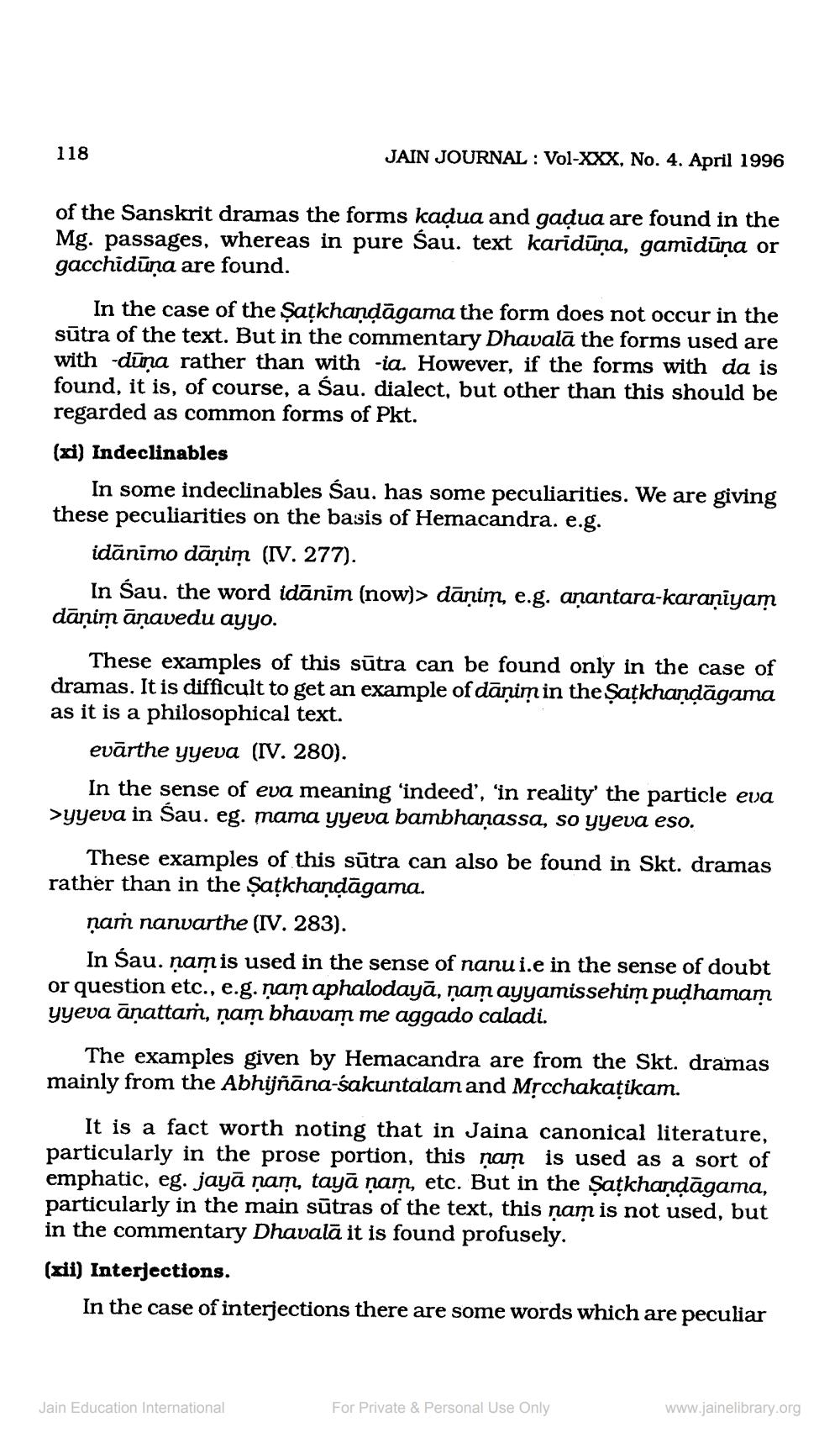________________
118
JAIN JOURNAL : Vol-XXX, No. 4. April 1996
of the Sanskrit dramas the forms kadua and gaļua are found in the Mg. passages, whereas in pure Sau. text karidūņa, gamidūņa or gacchidūņa are found.
In the case of the Şațkhandāgama the form does not occur in the sūtra of the text. But in the commentary Dhavalā the forms used are with dūņa rather than with -ia. However, if the forms with da is found, it is, of course, a sau. dialect, but other than this should be regarded as common forms of Pkt. (xi) Indeclinables
In some indeclinables Šau, has some peculiarities. We are giving these peculiarities on the basis of Hemacandra. e.g.
idānimo dāņim (IV. 277).
In Sau. the word idānim (now)> dāņim, e.g. añantara-karaniyam dāņiņāņavedu ayyo.
These examples of this sūtra can be found only in the case of dramas. It is difficult to get an example of dāņim in the Şațkhandāgama as it is a philosophical text.
evārthe yyeva (IV. 280).
In the sense of eva meaning 'indeed', 'in reality' the particle eva >yyeva in Sau. eg. mama yyeva bambhanassa, so yyeva eso.
These examples of this sūtra can also be found in Skt. dramas rather than in the Satkhaņdāgama.
ņam nanvarthe (IV. 283).
In Śau. nam is used in the sense of nanu i.e in the sense of doubt or question etc., e.g. ņam aphalodayā, nam ayyamissehim pudhamam yyeva āņattań, ņam bhavam me aggado caladi.
The examples given by Hemacandra are from the Skt. dramas mainly from the Abhijñāna-sakuntalam and Mscchakațikam.
It is a fact worth noting that in Jaina canonical literature, particularly in the prose portion, this ņam is used as a sort of emphatic, eg. jayā ņam, tayā ņam, etc. But in the Șatkhandāgama, particularly in the main sūtras of the text, this nam is not used, but in the commentary Dhavalā it is found profusely. (xii) Interjections.
In the case of interjections there are some words which are peculiar
Jain Education International
For Private & Personal Use Only
www.jainelibrary.org




